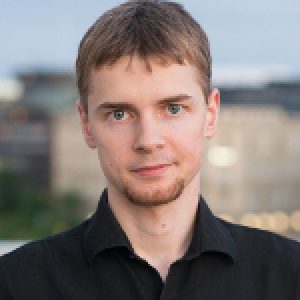Guest Program
International highly regarded scientists will be invited as Guest Scientists, which will facilitate the progress of (AC)³ through:
- Constructive discussions,
- Scientific Colloquia,
- Lectures,
- Participation in field campaigns, and
- Exchange of theoretical expertise with regard to modelling and data assimilation.
Xia Li in Leipzig
Xia Li from Princeton University and NOAA GFDL, USA vistited Leipzig and (AC)³ from July 3 – July 7 2023. Besides many fruitful discussions with (AC)³ team members and a visit to TROPOS, Xia Li gave a colloquium talk “Arctic low clouds modulated by sea ice leads: From global observations to large eddy simulations to global clim from ate models”.
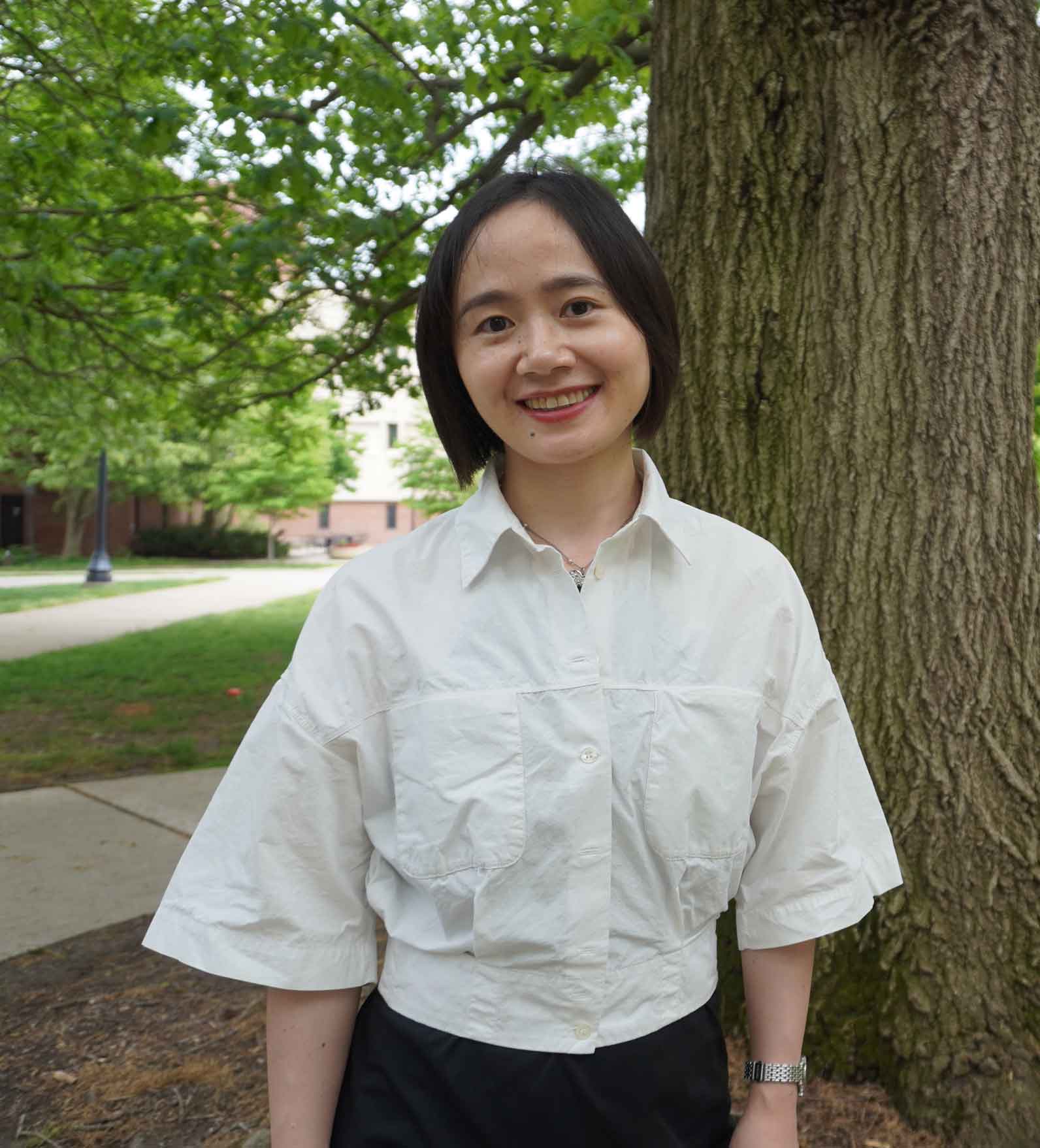
Prof. Dmitri Moisseev in Leipzig
Prof. Dmitri Moisseev of University of Helsinki visited Leipzig and (AC)³ from Nov 28th to Dec 2nd. With more than 70 publications, he is one of the leading experts for mixed-phase cloud processes and their observations with cloud radars and in-situ sensors. Besides many fruitful discussions with (AC)³ team members and a visit to TROPOS, Prof. Moisseev gave a colloquium talk “Radar and lidar depolarization ratios of snowflakes”.
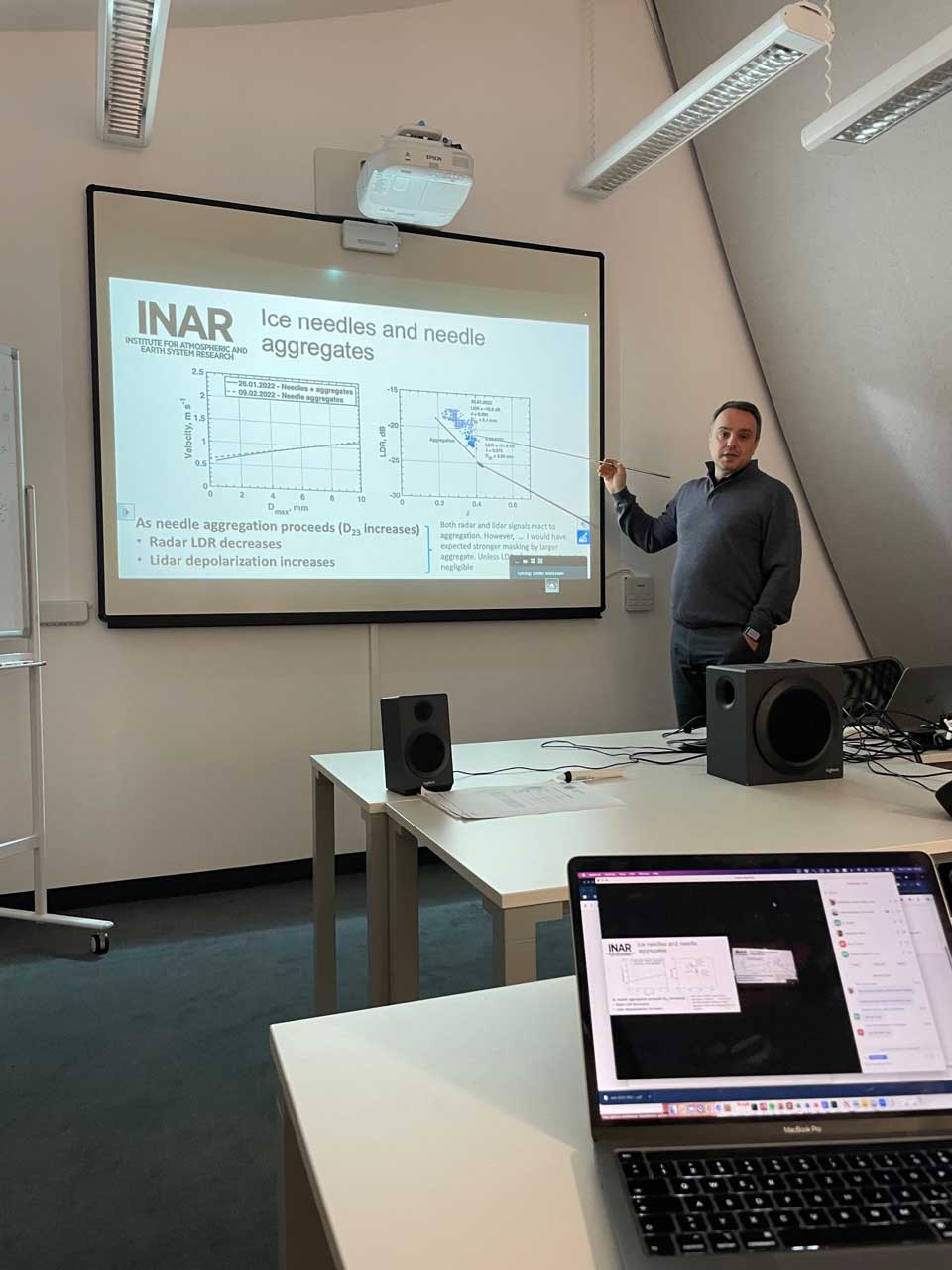
Dr. Judah Cohan in Potsdam
From 9th to 12th May 2022 our new phase III Mercator-fellow Dr. Judah Cohen (Atmospheric and Environmental Research, Lexington, and MIT, USA) visited AWI Potsdam and attended the (AC)³ spring General Assembly in Bad Honnef. At the GA, he gave the key not talk on “Arctic-midlatitude linkages and extreme weather in Europe”
The main aim of this visit was to strengthen the existing collaborations (documented by several joint publications, e.g. Handorf et al., 2015, Romanowsky et al., 2019, Cohen at al., 2020) between different (AC)³ partners, in particular at AWI Potsdam (project D01, D03, E04)) and University Leipzig (project D01, A02) and Judah Cohen on the topic of Arctic-mid-latitude linkages. At AWI Potsdam, Judah Cohen gave a talk on “Eurasian Snow Cover Variability Links with Stratosphere-Troposphere Coupling and its Potential Use in Subseasonal to Seasonal Predictions”. Furthermore, we discussed analyses of reanalysis and available model data (e.g., from PAMIP) and planned ICON model simulations within D01 for understanding AA mid-latitude linkages.
Dr. Alek Petty (NASA’s Goddard Space Flight Center and University of Maryland) at AWI-Potsdam 16-17 July 2019
Dr. Alek Petty visited the regional modeling group (A. Rinke & colleagues) at the Alfred Wegener Institute, Helmholtz Center for Polar and Marine Research (AWI) in Potsdam.
He is an Assistant Research Scientist at NASA’s Goddard Space Flight Center and the University of Maryland.
Dr. Petty researches Arctic and Antarctic sea ice variability and its interactions with the atmosphere and ocean using remote sensing data and climate models. He is a member of NASA’s Operation IceBridge and ICESat-2 project science offices.
He gave a seminar on ‘New estimates of Arctic sea ice thickness from NASA’s ICESat-2 mission‘.
We discussed overlapping interests and projects (ours are associated with (AC)³ projects D03 and E04) related to Arctic atmospheric-sea ice variability, including polar precipitation and Arctic cyclones/polar lows and their linkages with Arctic sea ice variability.
Furthermore, we discussed plans for coordinated modelling efforts related to the Arctic-CORDEX model intercomparison project and the upcoming MOSAiC campaign in the Arctic.
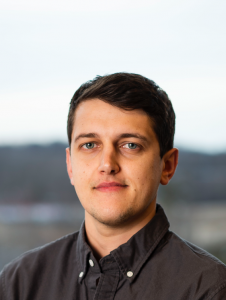
Prof. Bruno Tremblay (McGill University, Montreal, Canada) at University of Leipzig, November 20-23, 2018
Prof. Bruno Tremblay from McGill University, Montreal, Canada was an (AC)³ visiting scientist at the University of Leipzig. His research is centered on Arctic sea ice at the interface between the ocean and the atmosphere using Global Climate Models and observations. He is working on forecasting of pan-Arctic and regional Arctic sea ice on time-scales of month to seasons.
In a seminar talk at Uni Leipzig he introduced his pan-Arctic forecast of the minimum sea ice extent using a Lagrangian approach. Specifically, he showed that the position of the minimum sea ice extent ice edge in the Arctic is well correlated with the previous winter’s coastal divergence. The maximum correlation is obtained when the synthetic ice edge is backtracked from May to February. While the pan-Arctic net ice divergence could be correlated with the winter mean Arctic Oscillation index, a regional analysis requires sea ice drifts in order to calculate the winter mean ice divergence along the coasts. This finding supports the need for continuous production of real-time satellite-derived sea-ice velocity vectors, which can now be used for observation-based regional forecasting. Other potential predictors include ocean heat fluxes, first year ice area, as well as cloud amount and cloud phase. He plans to cooperate with Jun.-Prof. Heike Kalesse in a project studying cloud amount and phase as Arctic minimum sea ice extent predictor.
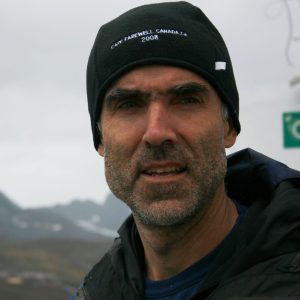
Dr. Damao Zhang (Brookhaven National Laboratory) at University of Cologne, November 12-21, 2018
Research associate Dr. Damao Zhang from Brookhaven National Laboratory visited the Integrated Remote Sensing research group at the Institute of Geophysics and Meteorology (University of Cologne). His research interests are on understanding cloud physical processes and developing retrieval algorithms using multi-platform and multi-sensor observations. Specifically, his research has focused on mixed-phase clouds and combined observations of the satellites CloudSat and Calipso on NASA A-train. During the visit, he participated the 2nd (AC)³ Science Conference on Arctic Amplification and gave a keynote talk in the Cluster E session about remote sensing observations, both ground-based as well as space-borne, of the mixed-phased clouds. He is associated to Cluster E collaborating both with the Alfred Wegener Institute, Helmholtz Centre for Polar and Marine Research in Potsdam (AWI-P) and University of Cologne (UNI-K) in a study of the Arctic snowfalls and how these are represented in regional climate model simulations in respect to satellite observations. We shared interesting conversations on the methodology and limitations of the comparison, and agreed upon the future steps. For Arctic snowfall measurements, CloudSat with the Cloud Profiling Radar (CPR), a 94-GHz nadir-looking radar, is best suited, and the studied data set covers the years 2006-2010. For this period AWI-P have created corresponding HIRHAM-runs. Special interest is on for example the vertical structure of the hydrometeors and the spatial-variablity of snowfalls representative both in the satellite and modeling results.
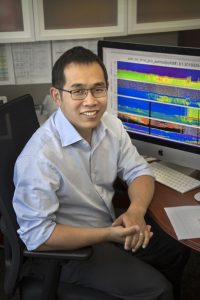
Dr. Chantal Claud (LMD/IPSL, CNRS and Ecole Polytechnique Université Paris-Saclay Palaiseau) at University of Cologne, November 7-8, 2018
Dr. Chantal Claud from LMD/IPSL, CNRS and Ecole Polytechnique Université Paris-Saclay Palaiseau and director of astronomical observatory Versailles Saint-Quentin-en-Yvelines Observatoryin in France, visited Integrated Remotes Sensing research group at the Institute of Geophysics and Meteorology (University of Cologne). Hers research interests are in detection of storm convection, its microphysics and precipitation from both, passive and active satellite instrumentation. As a long term expert in research on severe cyclones such as polar lows, as a part of hers visit, she gave a talk on this topic. In addition she also shared latest research that has been done in hers group. This research considers development of retrievals algorithms of a snowfall from satellites with passive microwave instruments Advanced Microwave Sounding Unit (AMSU) and Microwave Humidity Sounder (MHS) and from the active ClaudSat. In hers recent study the amount of total column water vapour from MODIS, GPS, SCIAMACHY and AIRS over Arctic region has also been investigated. This made it for a very interesting and fruitful latest research exchange between participants of our group that are part of (AC)3 subprojects E04 and B05. We mostly discussed possibilities and limitations of snowfall retrieval from AMSU-B/MHS in comparison with ClaudSat and CALIPSO satellites and ground based Micro Rain Radar (MRR).
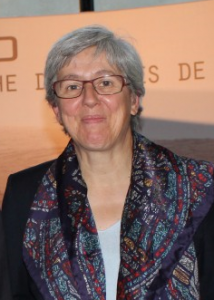
Dr. Linette Boisvert (NASA Goddard Space Flight Center, Cryospheric Sciences Lab, Greenbelt MD, USA) May 28-31, 2018
NASA scientist Linette Boisvert from NASA GSFC visited the Alfred Wegener Institute, Helmholtz Centre for Polar and marine Research in Potsdam (AWI-P). Her research interests, which cover Arctic sea ice, moisture flux and Arctic precipitation establish a strong link to our (AC)³ project-related work, particularly in the projects E04 and D03. She introduced her submitted paper on Arctic Ocean precipitation in reanalyses. We discussed this in context of Benjamin Seggers complementary work on characteristics and variability of Arctic precipitation and snowfall from a reanalysis ensemble. We exchange our findings of the widely different results in the magnitude and phase of precipitation across the reanalyses, which highlights in particular the differences in model’s cloud microphysical parameterization. Although there are discrepancies between the different reanalyses, they agree that the amount of snowfall is decreasing over recent decade. We discussed potential feedbacks on sea ice, which is a joint interest in our future research.
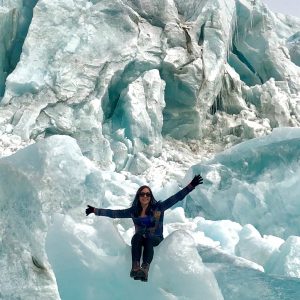
Prof. Xiangdong Zhang (IARC/UAF): August 21-25, 2017 at AWI-Potsdam
Xiangdong Zhang from the International Arctic Research Center (IARC) / University of Alaska Fairbanks (UAF) visited the Alfred Wegener Institute, Helmholtz Centre for Polar and Marine Research (AWI-P), and gave a seminar on “Modeling Studies on Linkage Between Arctic Change and Mid-latitude Climate and Weather”.
As a co-chair of the US CLIVAR Working Group on Arctic Change and Possible Influence on Mid-latitude Climate and Weather, he presented an overview of current existing knowledge on such links including weather extremes. Xiangdong’s associated research includes Arctic climate variability and change, storm track dynamics, and air-ice-sea interaction.
Additionally to Xiangdong Zhang, we welcomed his two PhD students Yang Yang and Liran Peng. During their visit, they all had extensive discussions with several (AC)³ members about their work. In particular, we discussed the continuation of our collaboration on storm-sea ice interaction, which is part of the D03 project. We compiled a first joint paper draft on “Arctic regional modeling investigation of summer storm – sea ice – ocean interactions”. We discussed results of the analysis of ensemble simulations of our regional coupled atmosphere-ice-ocean model HIRHAM-NAOSIM with respect to cyclone characteristics and how it might be affected by the underlying surface (e.g. sea ice extent). We also discussed specific details of the set up of our planned new model simulations when we plan to store additional oceanic model output for future analyses.
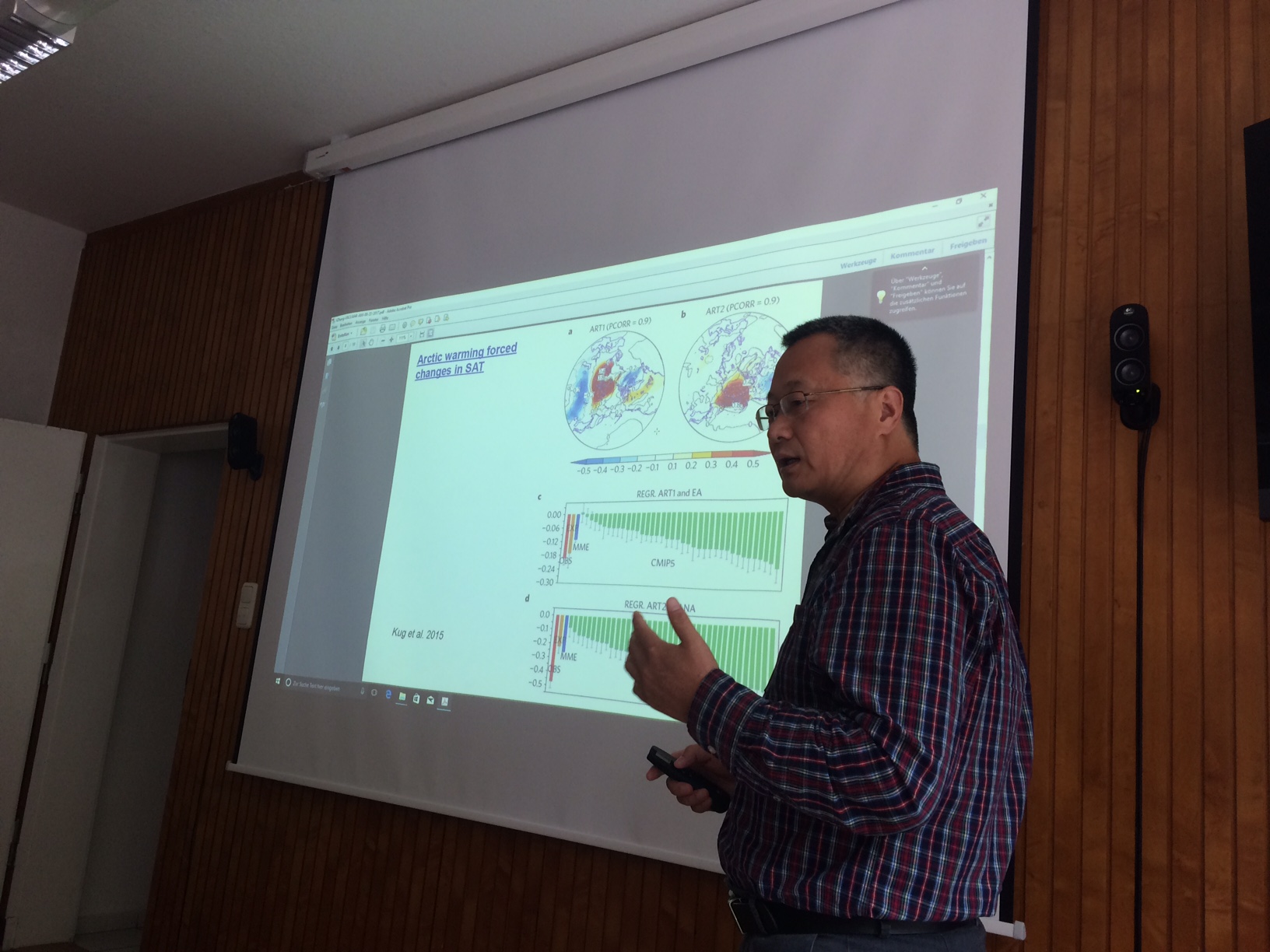
Dr. Robert M. Graham (Norwegian Polar Institute): July 24-28, 2017 at AWI-Potsdam
Robert Graham from the Norwegian Polar Institute (NPI) in Tromsø visited the Alfred Wegener Institute, Helmholtz Centre for Polar and Marine Research (AWI-P), and gave a seminar on “The role of winter storms in the Arctic Ocean”. The recent Norwegian young sea ice campaign (N-ICE2015) provides a valuable multi-disciplinary dataset from the pack ice north of Svalbard, covering the period from January – June 2015. During N-ICE2015, multiple winter storms were observed. Detailed observations show how the strong winds associated with these storms acted to deform the sea ice, enhance ocean mixing, and in certain cases generate large ocean surface heat fluxes that contributed to bottom melt of the sea ice. These storms were also associated with heavy snowfall and snow redistribution. Two recent studies performed in collaboration with (AC)³ members at AWI-P and Robert have shown that there has been an increased number of Arctic winter storms in recent years, particularly in the region around Svalbard. Robert visited AWI-P for five days and held extensive discussions with several (AC)³ members about their ongoing work and continued links with the research at NPI, particularly with the N-ICE2015 project. We discussed the potential application of a 1-D ice model with satellite-derived sea-ice back trajectories and atmospheric reanalyses to predict snow depth on sea ice. The multi-disciplinary N-ICE2015 dataset can also help to evaluate the performance of our regional climate model, remote sensing products, and atmospheric reanalyses in this region of ongoing climate change in the Arctic.
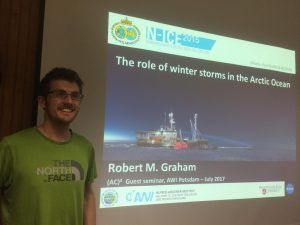
Prof. Rodrigo Caballero (MISU): February 6-7, 2017 at AWI-Potsdam
Rodrigo Caballero from the Department of Meteorology in Stockholm University (MISU) visited for two days the Alfred Wegener Institute, Helmholtz Centre for Polar and Marine Research (AWI-P). He gave a seminar talk on “The role of moist intrusions in winter Arctic warming and sea ice decline”. There is increasing observational evidence that the Arctic winter climate is strongly controlled by filamentary intrusions of moist, warm air which cross the entire Arctic basin. He discussed how the distribution of these intrusions is affected by large-scale atmospheric circulation, particularly mid-latitude storm track activity, blocking events, and possibly by interaction with the stratosphere. All AWI-P (AC)³ members working in clusters D and E had very extensive and fruitful discussions with Rodrigo about this topic in general and specific links with our projects, particularly with D03, E02, and E04. For the latter also our (AC)³ colleagues from University of Cologne took part in the discussion via telecon. We discussed future topics of collaboration within our (AC)³ projects. The application of his intrusion algorithm can help us to better understand the spatial patterns of temperature, precipitation and storminess trends from reanalyses and our regional climate model simulations. Also, this will help us to discuss the peculiarity of climate change at Ny-Ålesund/Svalbard, which is strongly affected by moisture intrusions, compared to observational sites in other Arctic regions.
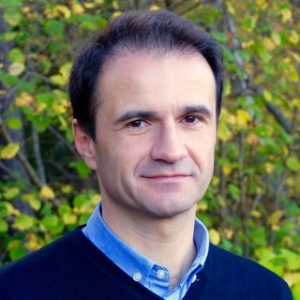
Dr. Jussi Leinonen (UCLA): November 7 – 18, 2016 at University of Cologne
Ideal single ice particles as we can buy them on Christmas Markets are quite rare in natural clouds. In the atmosphere, single crystals often build aggregates (snowflakes) or become rimed, i.e. liquid droplets freeze onto them which leads to much denser particles (graupel). While these ice processes are known to be of key importance for climate and weather forcast models, they are still very poorly understood.
Dr. Jussi Leinonen from the Joint Institute for Regional Earth Science and Engineering, University of California (UCLA) developed a comprehensive numerical model for ice particle aggregation and riming and is also an expert in the field of how these particles interact with microwave radiation used by ground-based and satellite remote sensors. During his two-week visit of the University of Cologne (UoC), he introduced the (AC)³ members in his aggregation and riming model and future topics of collaboration within (AC)³ were discussed. This exchange will help to further improve the microwave forward models needed to generate synthetic observations based on model simulations performed in (AC)³. Members of the UoC also visited with Dr. Leinonen the German Weather Service (DWD) and discussed with Dr. Axel Seifert how his aggregation and riming model could help to improve ice microphysical parametrizations which are currently under devlopment at DWD. In future such novel parametrizations will also be tested with the long-term and campaign data collected within (AC)³.

